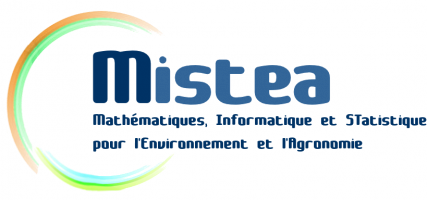URTIRISK is done to observe the evolution of the allergic risk associated with the presence of pine processionary moth, over a year and throughout the French territory.
The allergy risk depends on the time of year, and, of course, on the presence of caterpillars.
The production of urticating setae begins during the larval stage "L3" (Huchon and Démolin 1970). We begin by defining a potential allergy risk R0 which depends on the latitude and on the time of year, but which is independent on the presence of PPM. The computation of this potential allergy risk is based on the following assumptions :
1. There is a time t0, which corresponds to the beginning of the larval stage L3 and a time t1 which corresponds to the beginning of the procession. These times depend on the latitude only. They are computed on the basis of the chart in Démolin and Huchon (1970), adapted to the current geographical distribution of the PPM.
2. The duration of the procession is fixed to 30 days.
3. Urticating setae are released with a constant rate between t0 and t1, and with another (higher) rate during the procession.
4. The half-life of the setae is fixed to 10 days in the current version of the software.
Then, we define a function R1, which depends on the position (latitude, longitude), and roughly describes the distribution of the PPM nests:
5. We build a map of the potential area of distribution of the PPM, using only the northern front and the altitudinal front in the Massif Central together with the altitudinal limit of 1400m.
6. Using the IGN map showing the location of pine trees, we restrict the area of distribution of the PPM to the locations where pine trees are present.
7. We use a smoothing kernel to take into account the uncertainty related with the presence of unlisted isolated host trees and PPM nests beyond the colonization front.
By overlaying maps R0 and R1, we obtain a model for the risk R as a function of position (latitude, longitude) and date.







The risk R is normalized (in time and space), so that the maximum risk value is R=1. We define a warning threshold S in terms of the maximum risk. The URTIRISK software produces a map with four risk levels: no risk for R <S/10 (in white), low risk to S/10 ≤R <S (blue), medium risk for S ≤R <10S (in yellow) and very high risk for R≥ 10S (red).